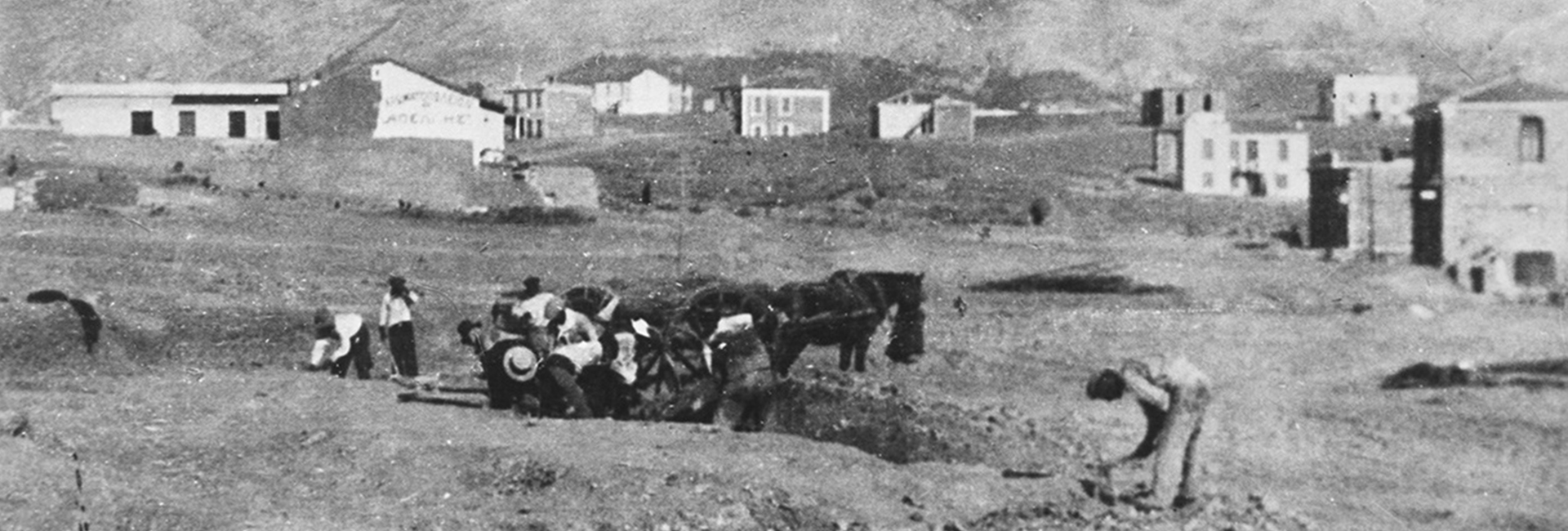
Nea Smyrni
May 17, 2023
Lavrio
May 17, 2023Athens Center B'
The arrival of 115,000 refugees from Asia Minor to Athens after the Catastrophe transformed the capital city and gradually imbued it a metropolitan character. Considering that the total number of its residents was not more than 300,000 at the time, the scale of the resulting changes in terms of population, everyday life, society, and behavior, was enormous. The cultural osmosis will become the catalyst for the corresponding changes in various fields such as music, literature, visual arts, as well as cooking.
The major problems that urgently required solution were the housing and nursing of refugees. The Greek authorities were unprepared to handle the droves of displaced people who flocked Piraeus in September 1922 and were subsequently directed towards the center of Athens.
It should also be mentioned that approximately two months before the disaster of Smyrna, and just a few days before the collapse of the front at the end of July, the royal government of Athens had passed an admittedly disgraceful law for the purpose of preventing refugees from coming to Greece.
Nevertheless, the consequences of the tragic developments were permanent, and their permanence and irreversibility became clear by the convention concerning the exchange of population in 1923. Athens, which at the time was completely unlike the big city it is in the 21st century, began transforming into a capital city. Its inner geography was rearranged, and new suburbs were born.
Once the refugees arrived, each and every public free space, park, church courtyard, square, army camp – even the bed of the river Illisos and its tributaries – became occupied by the wretched and displaced Greeks of Asia Minor. Journalists described the Greek capital as a “plain filled with tents”. Self-housing, tents, shacks, makeshift settlements, and illegal construction inevitably became predominant.
Townships were subsequently developed on the then outskirts of the city. Their architecture was centered around main interior courtyards, and rooms were sized just a few square meters, as required by construction standards that were set by the State or the Committee for the Rehabilitation of Refugees. The houses were wooden and prefabricated, and they were often delivered half-finished, and the completion of their construction was left to the refugees themselves.
“Official” townships were also created. In June 1923, the concession of public lands and the expropriation of private lots for the purpose of constructing urban refugee townships was enacted into law. The project of urban rehabilitation, which is a process that was often very complicated, was undertaken mainly by the Greek State.
The lack of housing in Athens during the 1920s was so extensive that the reference unit used by the Refugee Fund was not the house, but the room. It was common for one, two, or more families to be living in a single room.
In reality, refugee housing took different forms, which existed side by side for a very long time.
The major innovation amidst the prevalent mobilization of resources was the introduction of apartment buildings. The scope of the initial law that was passed in 1927 concerned solely refugee townships. Two years later, in 1929, the construction and use of this never-before-seen type of building was expanded.
The 1930s saw the construction of refugee apartment buildings on the outskirts of Lycabettus mountain, at Alexandras Avenue, at Dourgouti, at the old Kokkinia district, and also in the districts of Kaisariani, Agios Ioannis Renti, and Drapetsona. These buildings are regarded as typical of modern Interwar architecture that echo the influence of the Bauhaus style.
The project of the urban rehabilitation of refugees will be further assisted by the enactment of a law in 1929 which supported organized self-housing through building societies.
Refugee townships contain elements of the daily lives, sources, experiences, histories, and memories of Asia Minor Greeks, which are captured in quite unique ways. They often served as “small cities within the city”. At the turn of the 21st century, most such townships in Athens have been demolished.
Nevertheless, a number of these humble buildings still survive as an integral and inseparable part of the palimpsest of the cultural heritage of the city.
